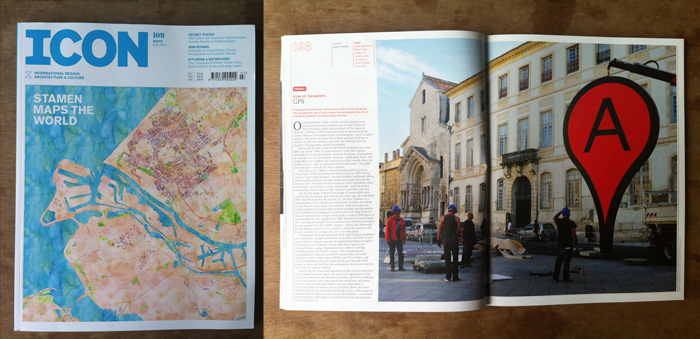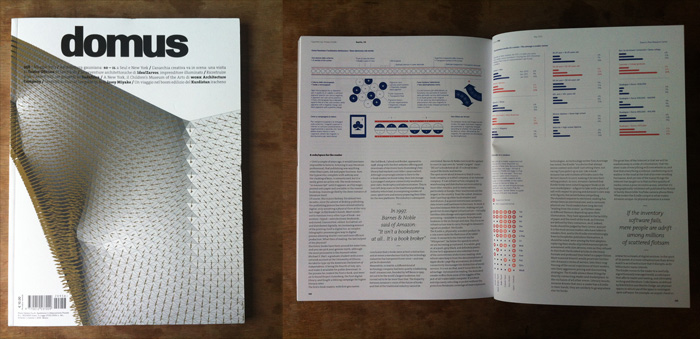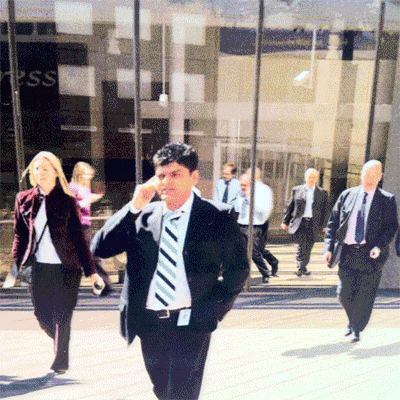
In the current issue of ICON magazine (for whom I’ve written previously on mobile phones and the architecture of datacenters), I’ve contributed an article on the past and future of the Global Positioning System (GPS):
On the 16th of September 1942, a series of radio signals were broadcast between Anglesey and the Isle of Man by engineers from the Decca Record company, under the guidance of William J. O’Brien, an American. O’Brien believed that by means of phase comparisons of continuous wave transmissions—such as radio signals—these vessels could calculate their relative position in respect to the two stations; and with the addition of more stations, triangulation would be possible.
After being rejected by the American military as too complicated, O’Brien had shared his plans with a friend in England, Harvey F. Schwarz, who was chief engineer at Decca. Schwarz in turn shared O’Brien’s plans with the British military, who essayed a series of trials.
On the 5th of June 1944, 21 minesweepers and other vessels successfully swept the English channels for mines, triangulated by new stations at Chichester, Swanage, and Beachy Head, laying buoys to mark the cleared areas which would allow the true invasion fleet to approach the French coast, all under the watchful waves of the Decca system.
After the war, the system proliferated to such an extent that 15,000 receiving sets were in use by 1970. Decca “chains”, replicated in Japan, around Namibia and South Africa, India and Bangladesh, Canada, North-West Australia and the Persian Gulf, consisted of three stations; their hyperbolic lines of position, termed Red, Green, and Purple, could be drawn on nautical charts and thus the receivers position inferred. Four stations were set up in New York at JFK, LaGuardia, Newark and atop the PanAm building on Park Avenue, to guide helicopters over the metropolis.
The Decca system remained in operation—through different ownership—until 31 March 2000, having provided safe guidance to a generation of seamen and aviators. But O’Brien’s system proved the principle of phase difference analysis for navigation, which was to be adapted over the intervening years by a range of technologies which traced man’s ascent from coastlines to the edge of space.
In September 1959, the United States launched the Transit 1A, the first satellite in a constellation of five which entered service in 1964, providing hourly fixes to naval ships. Its successor, which became the Global Positioning System (GPS) system of today, was devised by the US military and began its work in 1973, but long before it became operational, a tragic event made a crucial difference to its development. On 1st September 1983, Korean Air Lines Flight 007, carrying 269 people, was shot down by a Soviet interceptor, having strayed into the USSR’s airspace, and in the aftermath Ronald Reagan issued a direct order to make the nascent GPS freely available for civilian use, as a common good.
GPS became fully operational in 1993, with a full constellation of 24 satellites, already well tested in the first Gulf War. It still uses O’Brien’s original concept of modulating signal strengths from known base stations, except that those signals now originate from a range of geostationary orbits travelling 22,000 km above the Earth’s surface. The competing but complementary Russian GLONASS system achieved world coverage in 2011, while India’s IRNSS, the EU’s Galileo, and China’s COMPASS will each arrive in the next decade. Each system is open, but built on the assumption that access may be restricted in times of conflict.
Assuming the continued operation of the various networks, it is no longer possible, given the necessary equipment, to be truly lost at any point on the Earth’s surface. GPS and its siblings control navigation and time signals the world over, delineate surveys, track people and objects, and are embedded in everything from driverless cars to golf balls. More pervasive than the internet or any other manmade system, GPS might be considered man’s greatest structural achievement, a vast mesh of interlocking radio signals, beamed down from the heavens and covering us all.

And for Domus, a longer essay on the Kindle, and Amazon as an infrastructure, which is rather wonderfully illustrated with infographics:
Until a couple of years ago, it would have been impossible to believe, listening to any literature professional, that publishing was anything other than a pen, ink and paper business. Sure, the typewriter, complete with ashtray and the clacking of keys, is romanticised, but it is rarely given an active role. The work remains “in manuscript” until it appears, as if by magic, printed onto paper and available in the nearest bookshop, transmographied by the sheer romance of literature itself.
Of course, this is pure fantasy. For almost two decades, since the advent of desktop publishing (the clue, so obvious in hindsight, being in the name), the publishing process has been almost entirely digital, only assuming a physical form at the very last stage: the reader’s hands. Most novels—not to mention every other type of book—are written—typed—onto electronic keyboards, stored, transmitted, edited, formatted, set and distributed digitally. An increasing amount of the printing itself is digital too, as complex lithographic processes give way to digital presses allowing shorter runs and more efficient production. What then of reading, the last outpost of the physical? …
Update: The piece is online in full here.

And for the Photographer’s Gallery in London, as part of an exhibition called “The Joy of GIF”, the above, which I described thusly:
The image depicts the progressive degradation of an image caused by applying every single Instagram filter in turn. I happen to believe that the filter process in apps like Instagram and now increasingly pervasive across digital photography is a semi-conscious process of legitimisation in time, engraining disposable images of the moment with a patina of memory and experience, in order to save and justify them.
The source image is a photograph of an architectural visualisation, part of my Render Ghosts series i.e., it is already an unreal and imaginary projection of a possible future, which is worn away by our attempt to memorialise it, before it has even fully formed.
Comments are closed. Feel free to email if you have something to say, or leave a trackback from your own site.